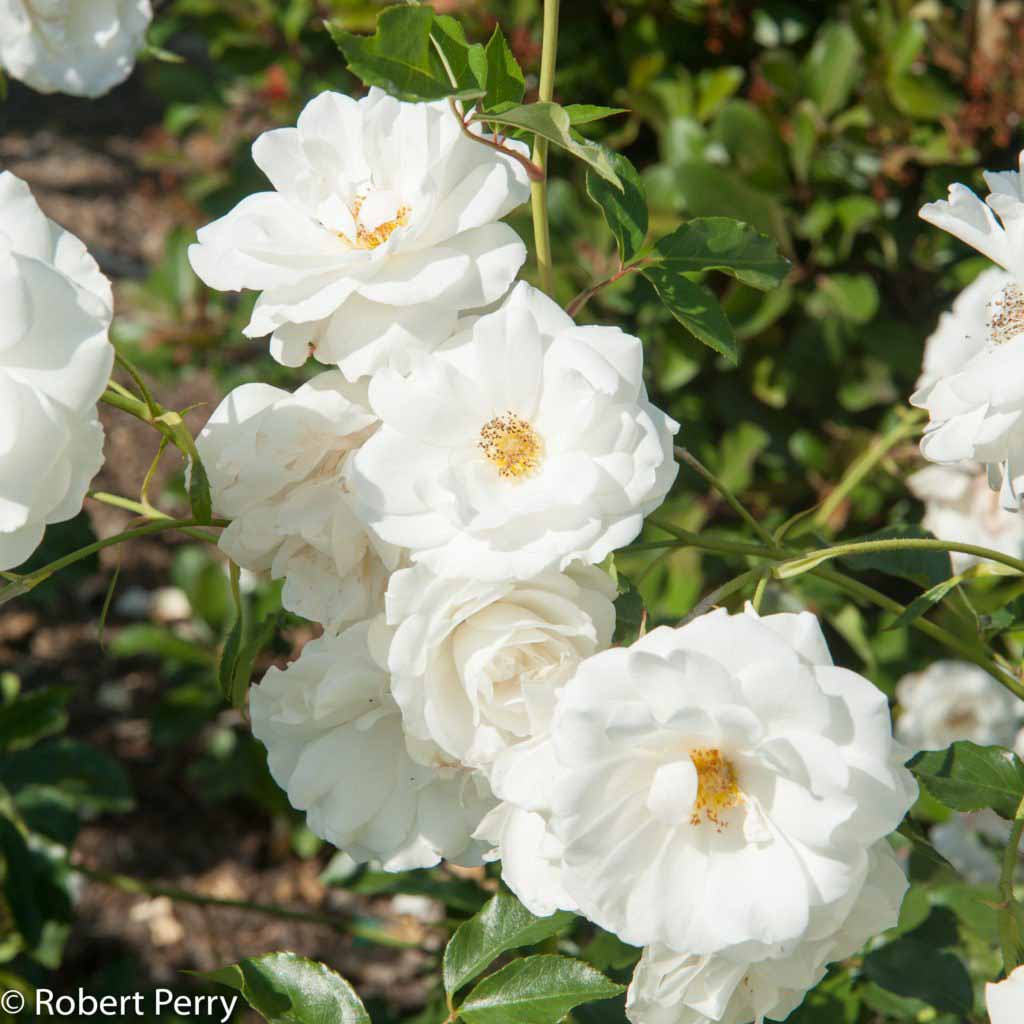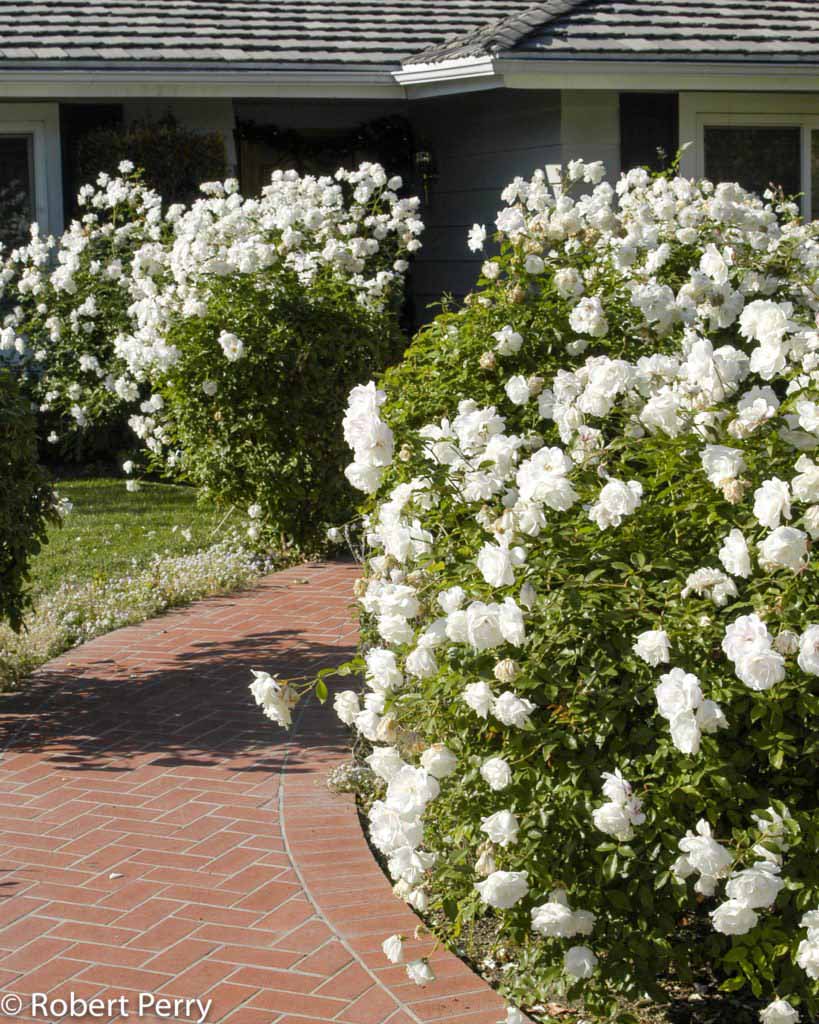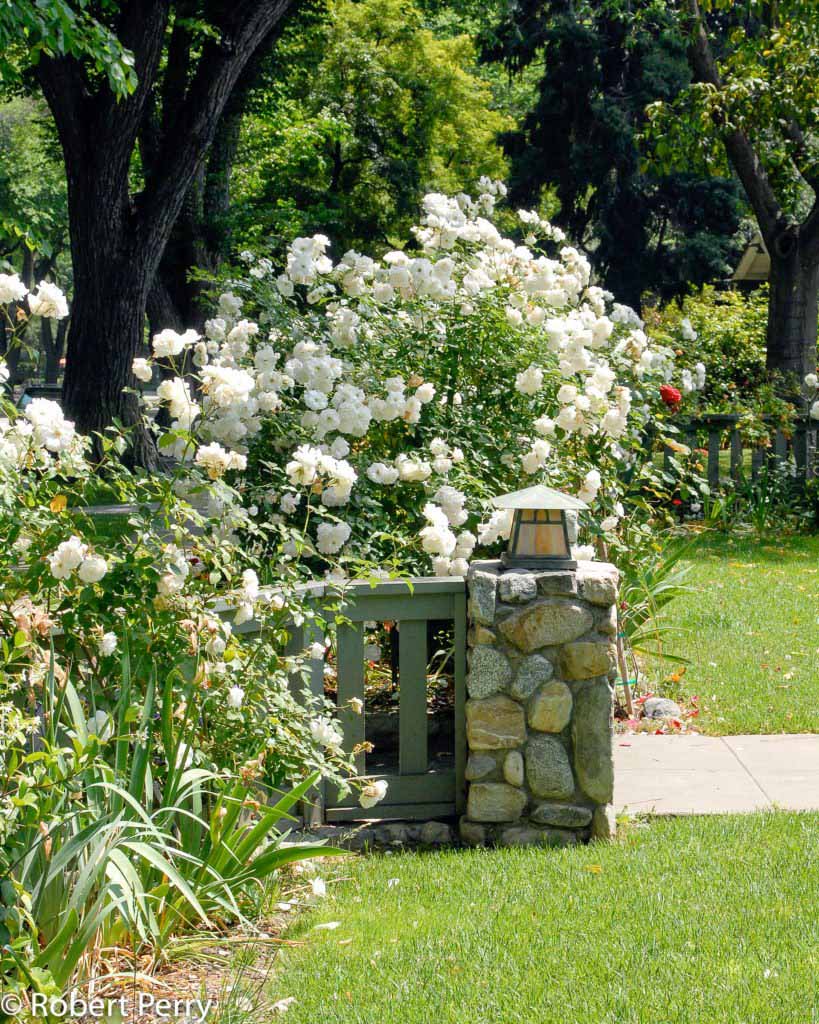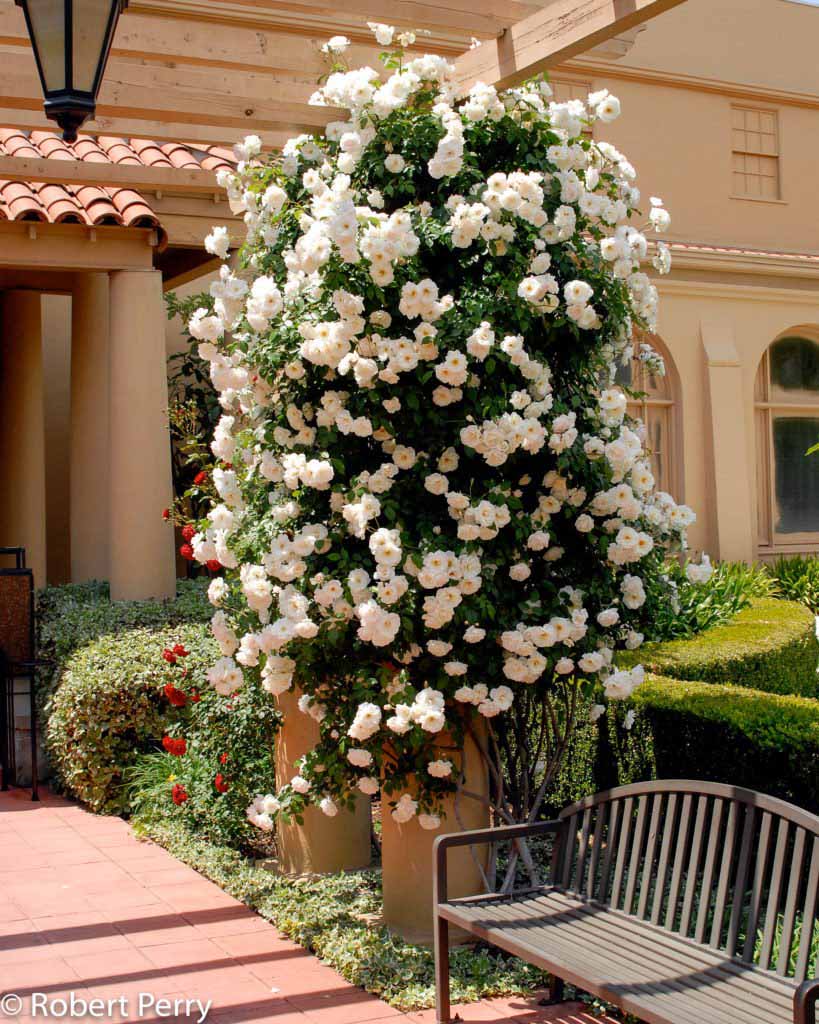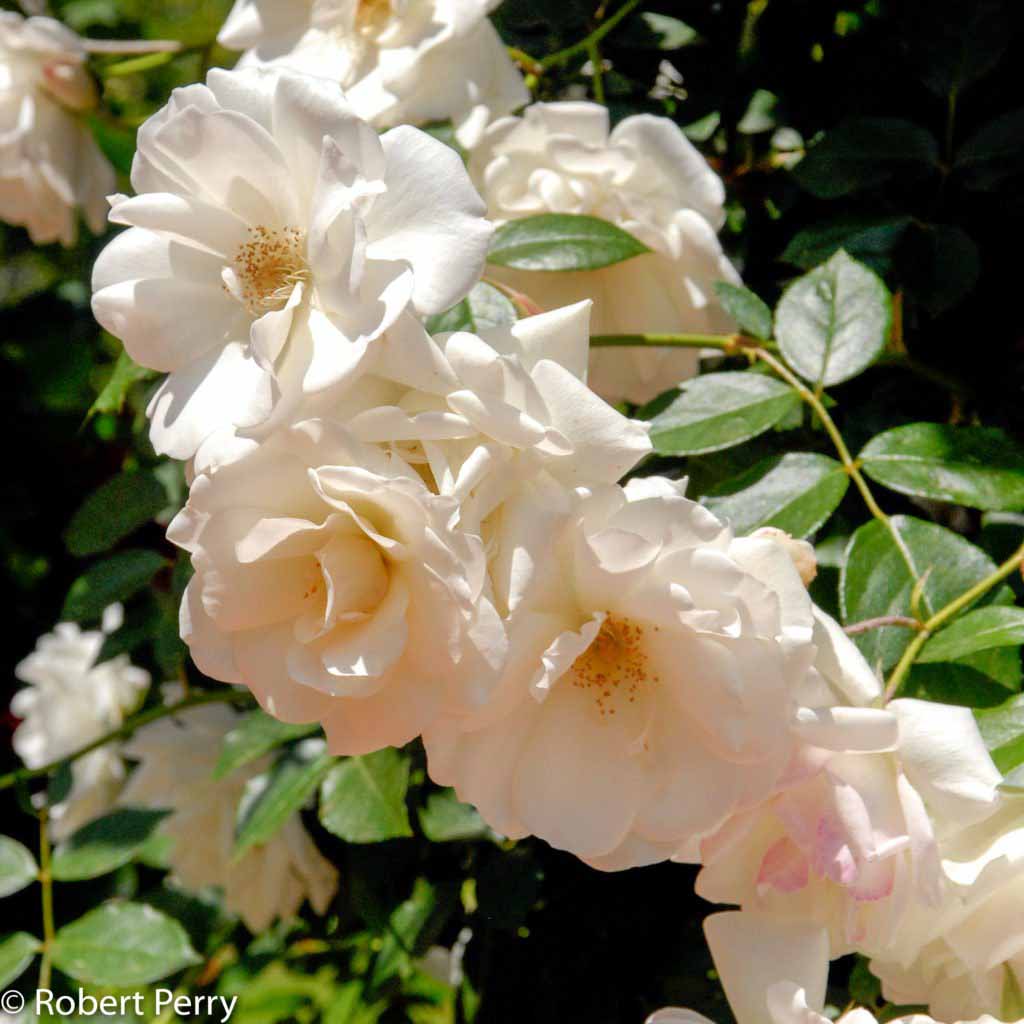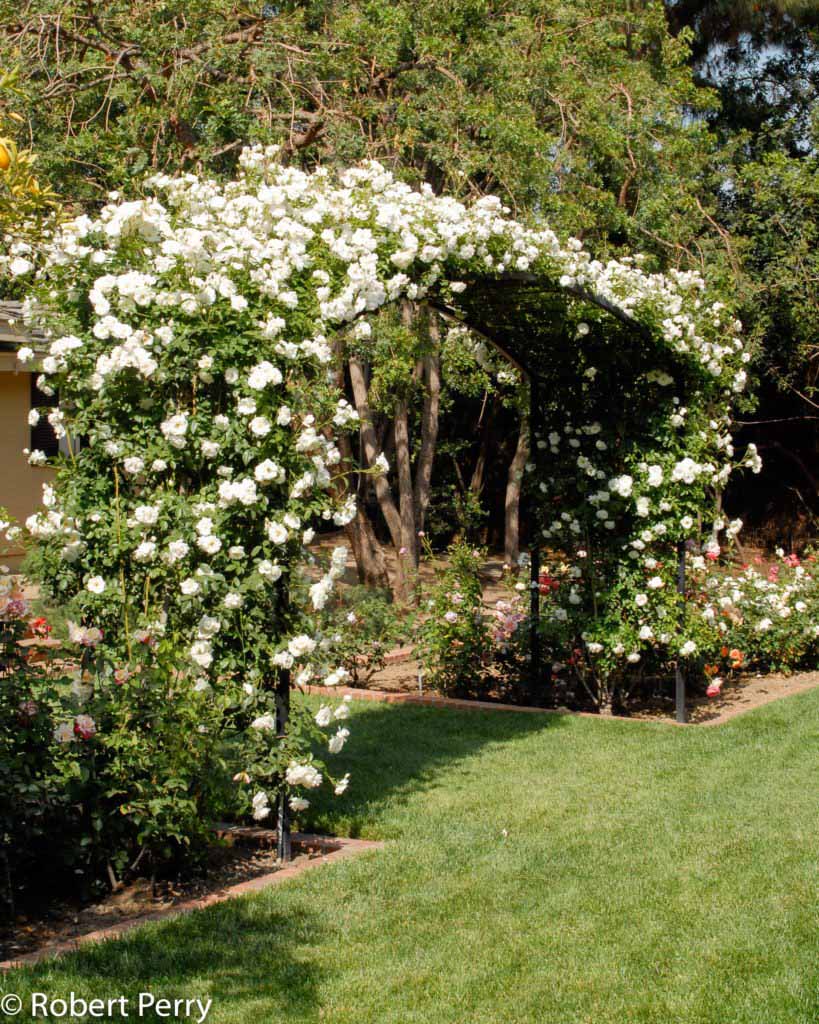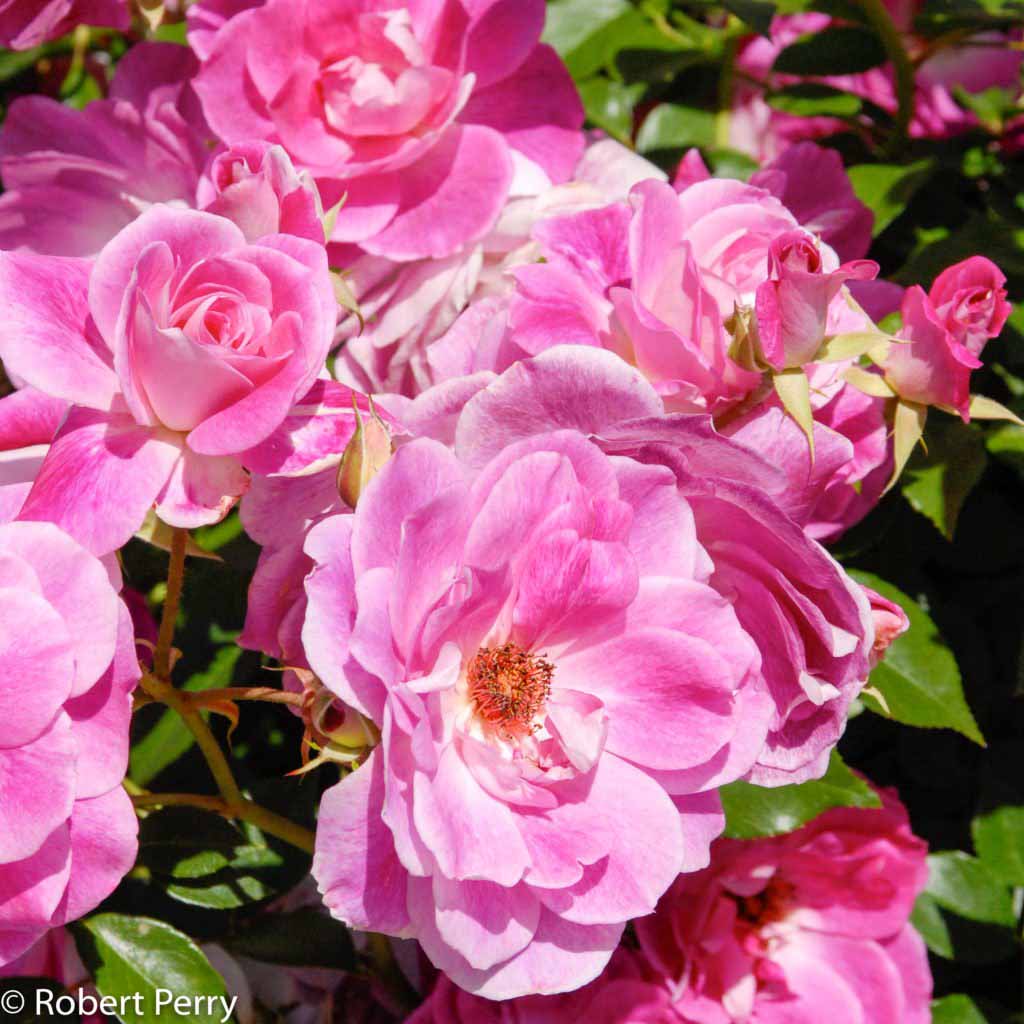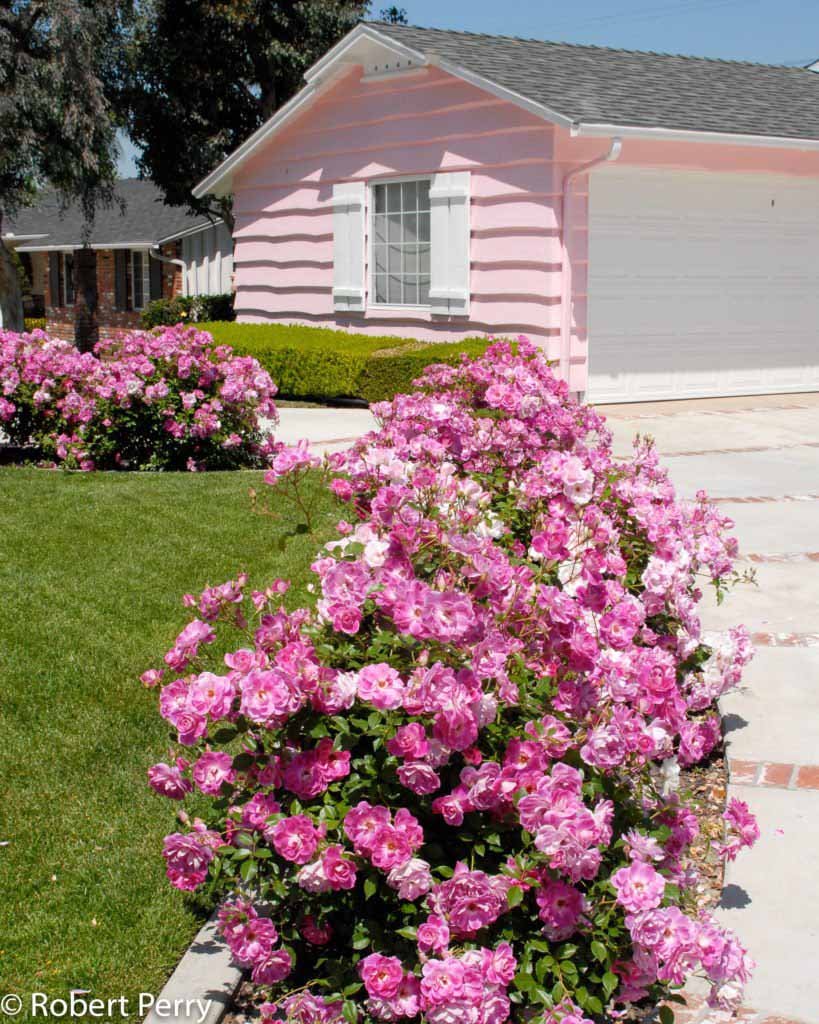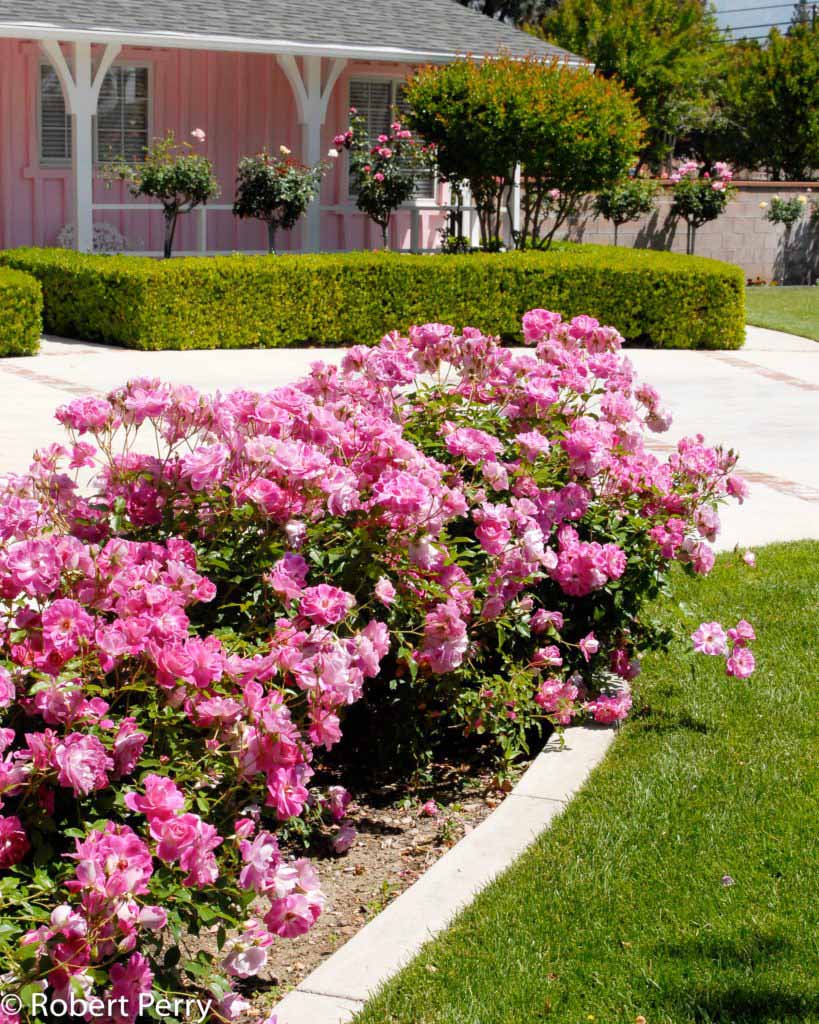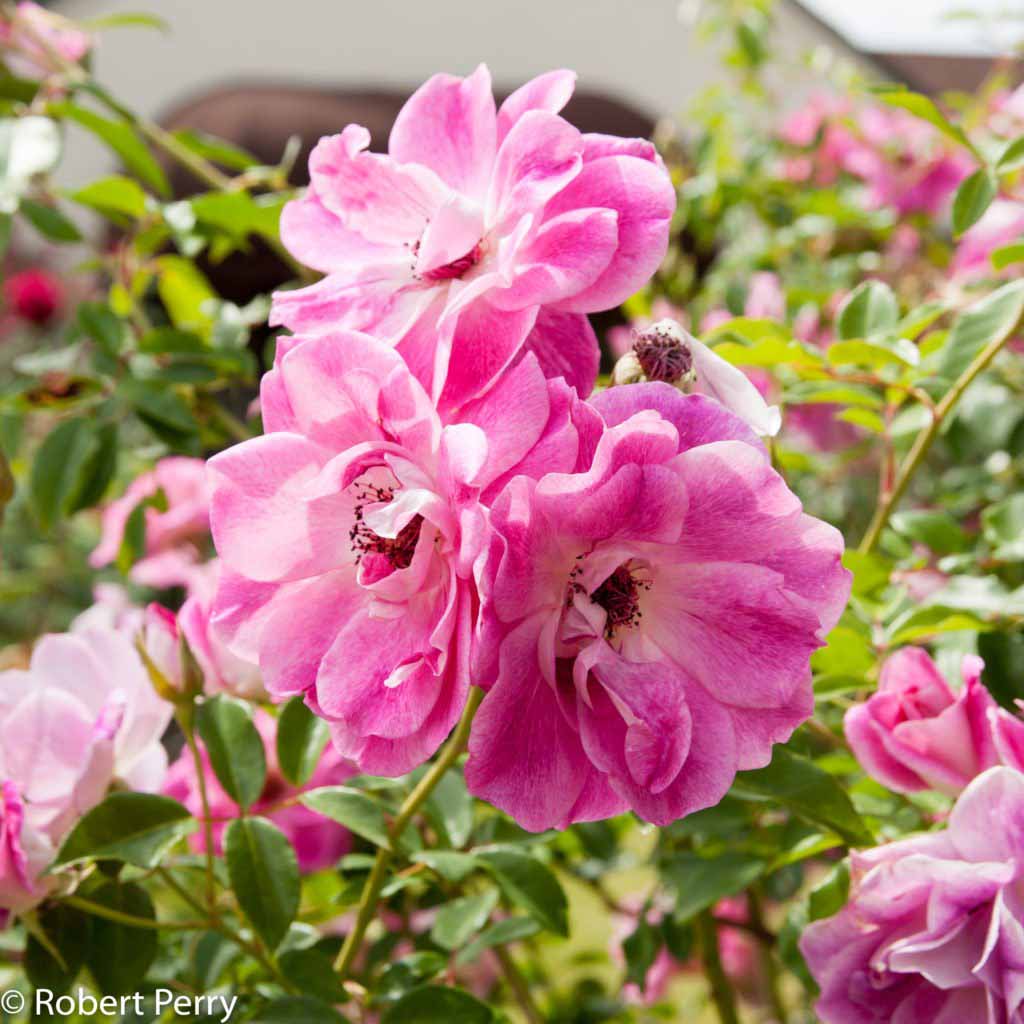Floribunda roses are robust semi-evergreen climbing shrubs with an upright growth habit that can reach 8-10 ft. tall and 5-6 ft. wide. Flexible stems have many thorns; pinnately divided leaves are bright green. Double flowers with a touch of pink grow in large sprays beginning in spring and will repeat several times throughout summer and fall.
Iceberg rose belongs to the floribunda group and is arguably the most popular rose for commercial and residential landscapes and garden plantings in the Inland Empire. They are highly resistant to diseases and are widely grown in mass plantings, along borders, in containers and in focal areas. Climbing forms can be trained on columns and espaliered along walls. Plant in rich soils with good drainage, sunny exposures and provide regular water. Heaviest pruning and fertilizing should be done in the winter to maintain desired sizes and encourage better flowering during spring. A pink flowering cultivar known as R. f. ‘Brilliant Pink Iceberg’ grows as a 3-5 ft. tall shrub and produces colorful displays of pink flowers with white markings. This cultivar produces deeper flower color in areas with cooler summer temperatures.
